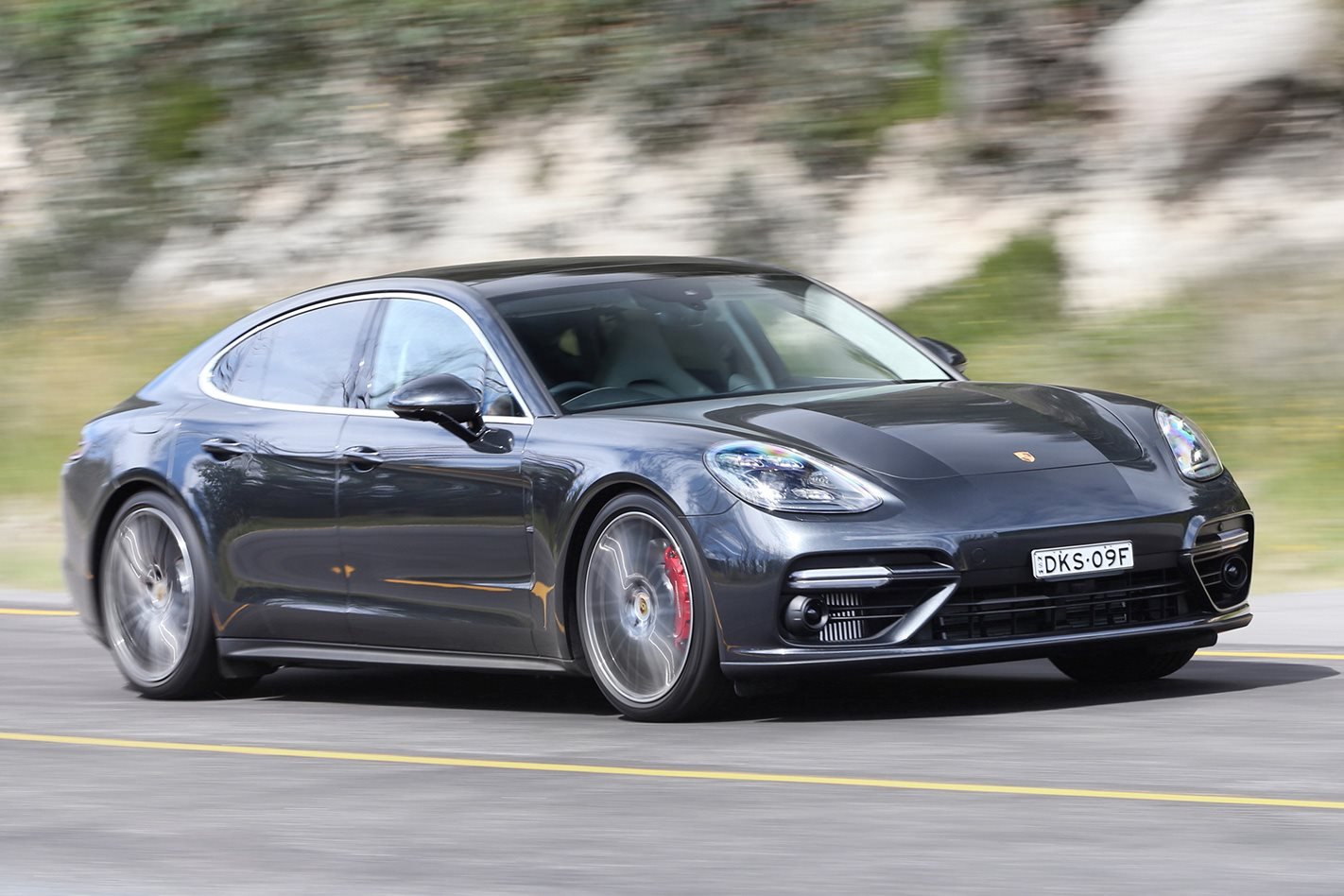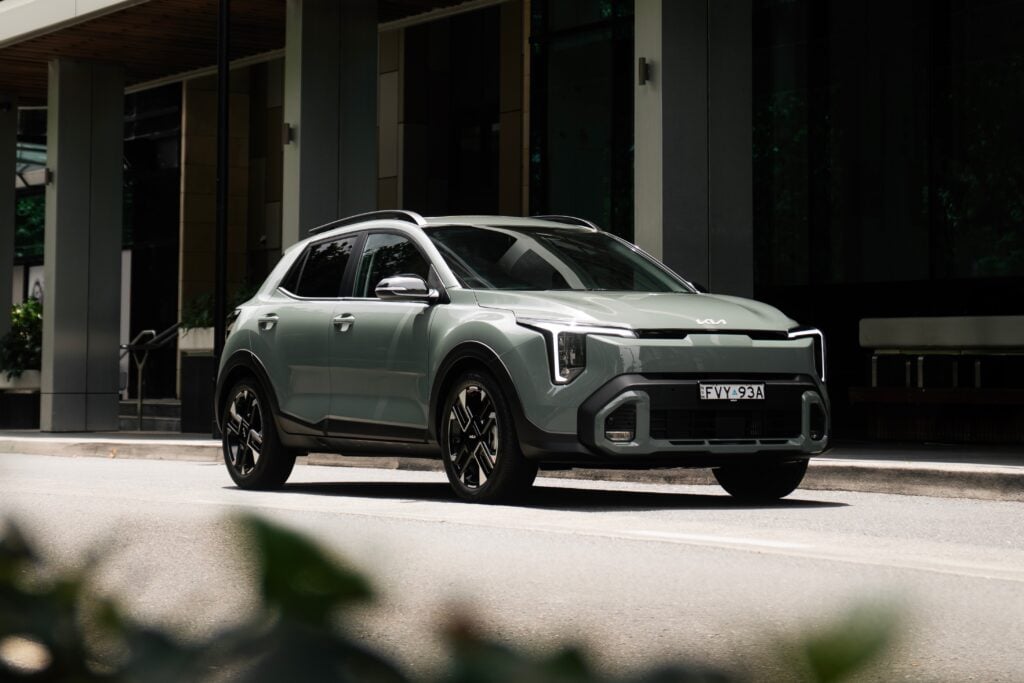Some things, like Happy Gilmore reruns on a Friday night at home, surprise and delight no matter how much you expect them to happen.
Take the new Porsche Panamera. It wasn’t as beautiful as it was enjoyable to drive. And while we expected a fix, we didn’t think it’d be this dramatic.
The problem was that roofline. More ‘hunchback’ than ‘hunky’, it was a constant critique in otherwise glowing reviews.

The 30mm longer wheelbase allowed the rear seats – and importantly, the roof line – to drop 20mm. The roof’s crest was lifted, too, so if you squint you’ll see the 911’s slope massaged into its revised silhouette.
You might even confuse the two from some angles, thanks to that strip of LEDs bridging its rear tail lights. However, Panamera signatures are there. The door and bonnet scallops have deepened, and its LED headlights still sport squared tips.

Things like a tactile ‘click’ when you press a button on the console are suitably slick. And the infotainment’s new program is simple to use, even for iPhone-phobes.
What’s familiar is a drive-mode dial on the steering wheel that adjusts the car’s air suspension, eight-speed PDK, and twin-turbo engines to suit.
Confusingly, the interior doubles up on ways to access Sport, as you can find it on both the pad and dial. But this is good fortune, as the more ways to access Sport, the better.
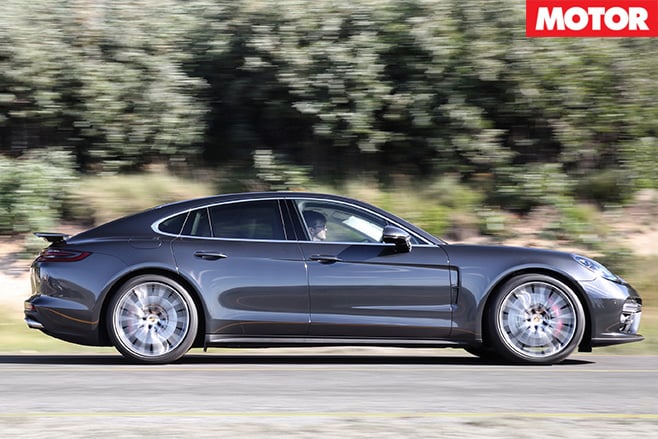
At times the Turbo’s 4.0-litre hot-vee twin-turbo V8 switches to a V4 to sip fuel, but the downside is sluggish tip-in at low speeds.
Sport Plus throws its personality to the other end of the scale. The quad-tip exhausts snarl around town, the Turbo’s split-wing deploys for battle, and the dampers stiffen up. But it’s a little erratic for the car’s more subdued personality.
Sport mode strikes the nicest balance. Here the ride and handling compromise is expertly judged, in that there’s a suppleness befitting of a grand tourer, but also the responses of a steel-sprung sports car.
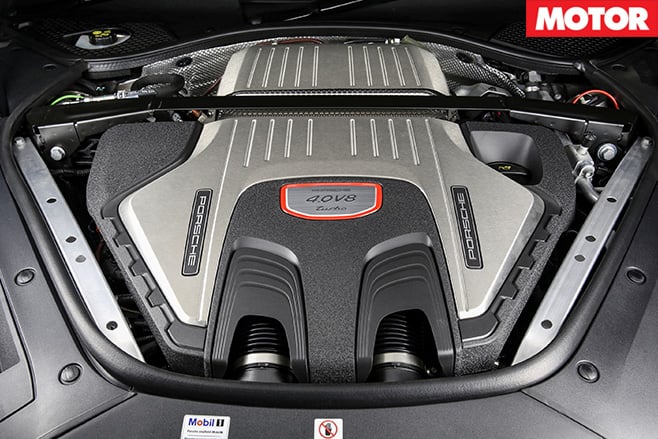
The Panamera relies on adaptive dampers, rear steering, and brake torque vectoring in this department. But soon the active-roll bars and rear clutch diff that helped it blast around the Nurburgring in 7:38 will become available as options.
Kiss the firewall with the throttle and the Turbo’s 404kW/770Nm helps it dispatch 100km/h in 3.6sec, 200km/h in 12.7sec and reach a top speed of 306km/h. At a standard price of $376K, the Turbo will empty bank accounts just as quickly.
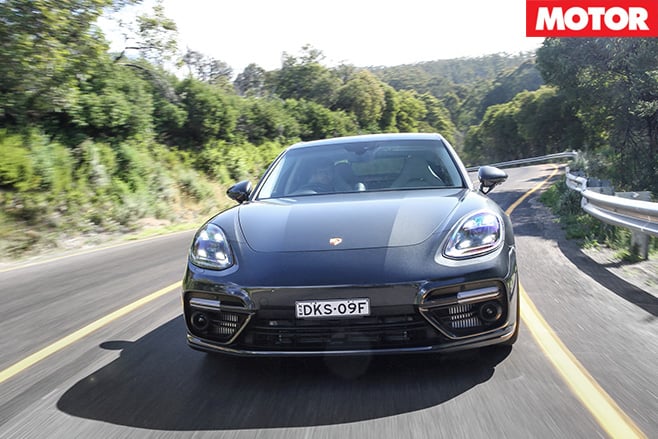
Buyers holding out for the full-fat Turbo S will be pleased to know it’ll arrive third quarter. It’ll be the fastest Panamera, with 500kW/850Nm, but it finds the new stonk via a hybrid drivetrain, a la 918 Spyder.
So, the V6 is the pick and the fastest one’s a hybrid. Now, they’re surprises we also didn’t expect.
4.5 stars out of five
2017 Porsche Panamera 4S Specifications
Engine: 2894cc V6, DOHC, 24v, twin-turbo Power: 324kW @ 5650-6600rpm Torque: 550Nm @ 1750-5500rpm Weight: 1870kg 0-100km/h: 4.2sec Price: $302,400
2017 Porsche Panamera Turbo Specifications
Engine: 3996cc V8, DOHC, 32v, twin-turbo Power: 404kW @ 5750-6000rpm Torque: 770Nm @ 1960-4500rpm Weight: 1995kg 0-100km/h: 3.6sec Price: $376,900 (est)


